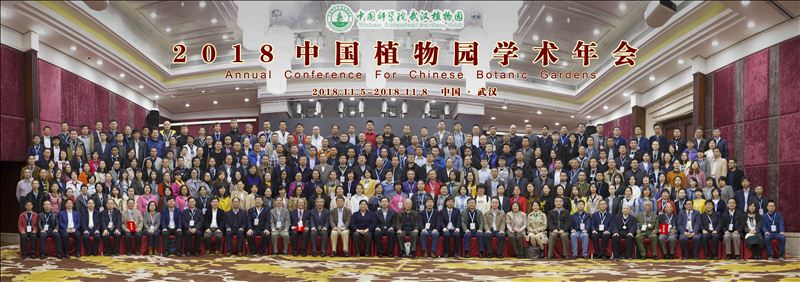Recently, the Secretary-General of China Biodiversity Conservation and Green Development Foundation (CBCGDF) was invited to deliver a keynote speech themed “Biodiversity Conservation in Botanic Gardens” at the 2018 Annual Conference for Chinese Botanic Gardens.
Dr. Zhou Jinfeng introduced existing unsustainable planning regulations in urban greening at the beginning of his talk:
1. Weeding. It is mentioned in the “Code for Management of Wuhan Urban Greening” that lawn and ground cover plant should be kept neat, and the lawn edge should be tidily trimmed where there should be no weed; the “Code for Management of Landscape Greening in Beijing” similarly requires that to maintain their purity weeds be timely removed from artificially planted lawns. CBCGDF has been repetitively calling for “Let the Weeds Grow”, which emphasizes the reserving of living space for wild flowers and weeds instead of uprooting them completely in urban landscape greening. Wild flowers and weeds are not supposed to be wilted due to inappropriate human activities, and biodiversity conservation should be highlighted.
2. The spreading of pesticides. The “Urban Greening Ordinances” of Beijing and Wuhan both stipulate the prevention of plant diseases be enhanced, and biological and chemical preventive measures be adopted when necessary. In 2017, Radboud University Nijmegen and the Entomological Society Krefeld in Germany jointly conducted a research and found that, in the past 27 years, the number of winged insects in one German natural reserve declined by 75%, and one reason for this is the extensive spreading of farm chemicals on farmlands around the natural reserve. The preservation of insects which act as important pollinators in the ecosystem should not be overlooked. CBCGDF urges the public to pay more attention to pollinating insects, and to protect them and their habitats.
3. Neat trimming. Wuhan city stipulates that management personnels for green land maintenance are supposed to trim trees on a regular basis, and likewise lawns in Beijing are supposed to be trimmed periodically with their edges being kept neat. Recently around 202 willows at the Xi’an Yan Ming Lake Park were trimmed straight. The management staff there claimed that these willows were trimmed because they were ill and there was such unhealthy symptom as yellowing at the end of their branches. In response to this, some citizens commented that in this way these willows have lost their natural beauty. In fact, CBCGDF are prone to advocate wilderness and emphasize the establishing of wild cities so that animals and human beings can coexist harmoniously with both constituting part of the city ecosystem.
CBCGDF hopes that, after this annual conference for botanic gardens, relevant departments, experts and scholars will notice and promote the amendment of any inappropriateness in existing “Urban Greening Ordinances”, pave the way for active public participation in biodiversity conservation and construct a beautiful China with combined effort from all parties.
Spot problems, and then solve problems. Following his speech, the Secretary-General of CBCGDF answered questions from audiences present at the conference on the development of botanic gardens and biodiversity conservation, which is to be reported in more detail later.

(Photo courtesy: the secretariat of the Conference)

(Photo: CBCGDF)
Original Chinese article:
http://www.cbcgdf.org/NewsShow/4854/6692.html
By / Lu Lei
